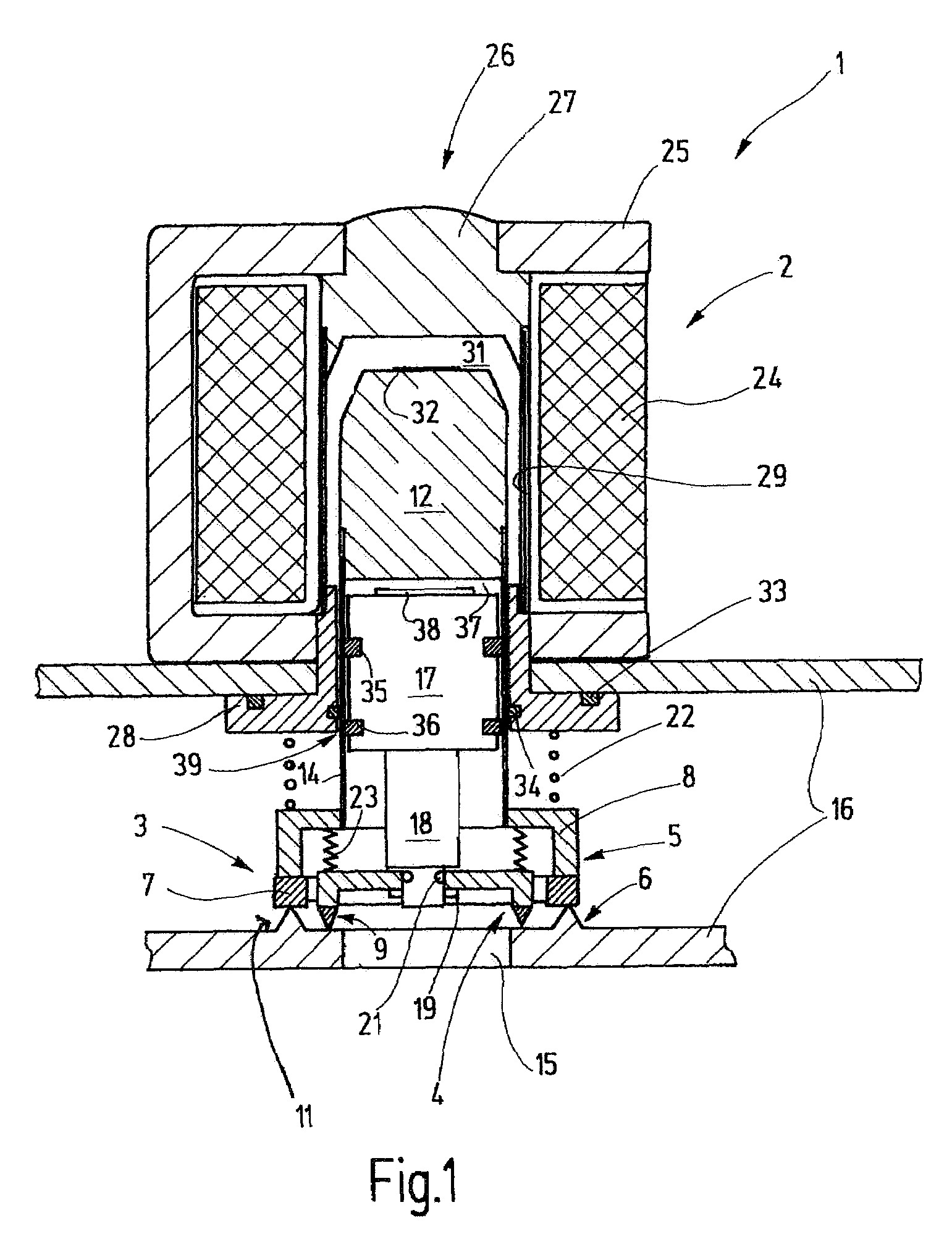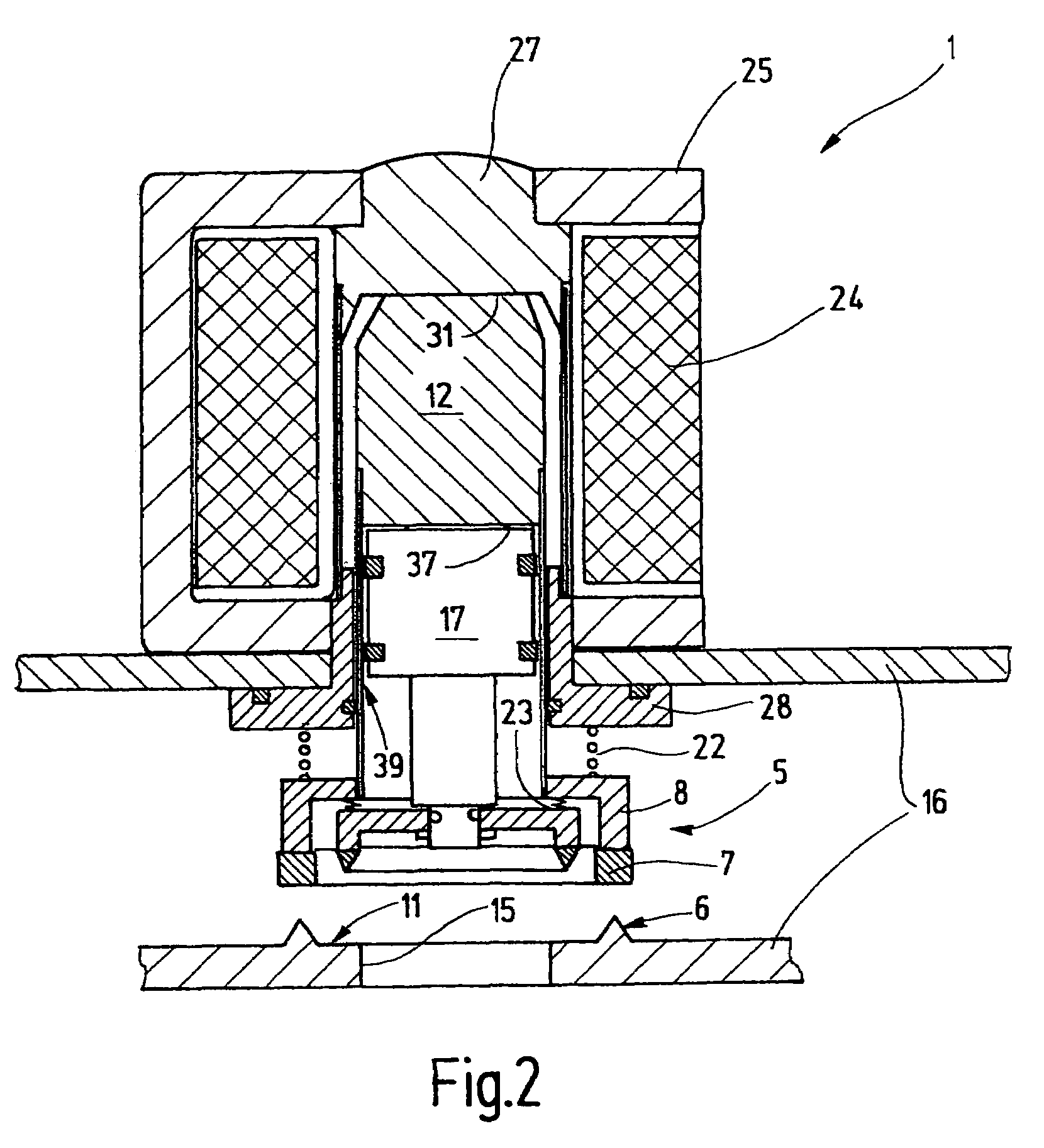Solenoid valve
a solenoid valve and valve body technology, applied in the field of valve assembly, can solve the problems of significant cost factor for electrical control of solenoid valves, relative high leakage flux, etc., and achieve the effect of convenient movemen
- Summary
- Abstract
- Description
- Claims
- Application Information
AI Technical Summary
Benefits of technology
Problems solved by technology
Method used
Image
Examples
Embodiment Construction
[0026]FIG. 1 shows a valve assembly 1 that comprises a solenoid actuator 2 and two valves 3, 4. The valve 3 is formed by a valve closing element 5 and a valve seat 6. The valve closing element 5 contains an annular sealing member 7, made of an elastomer, for example that is held on an annular face of a hollow-cylindrical body 8 that is closed on the top and has approximately the shape of a cup or bell.
[0027]The valve 4 comprises a valve closing element 9 and a valve seat 11. The valve seats 6, 11 may be structurally combined with one another, as shown in FIG. 1. This can be achieved, for example, by realizing the valve seat 6 in the form of an annular rib that concentrically surrounds the valve seat 11 realized in the form of a planar annular surface. However, it would also be possible to arrange the two valve seats 6, 11 separately from one another in the same plane or in different planes, but in both instances they are preferably arranged coaxial to one another.
[0028]A first armat...
PUM
| Property | Measurement | Unit |
|---|---|---|
| axial length | aaaaa | aaaaa |
| thickness | aaaaa | aaaaa |
| magnetic reluctance | aaaaa | aaaaa |
Abstract
Description
Claims
Application Information
 Login to View More
Login to View More - R&D
- Intellectual Property
- Life Sciences
- Materials
- Tech Scout
- Unparalleled Data Quality
- Higher Quality Content
- 60% Fewer Hallucinations
Browse by: Latest US Patents, China's latest patents, Technical Efficacy Thesaurus, Application Domain, Technology Topic, Popular Technical Reports.
© 2025 PatSnap. All rights reserved.Legal|Privacy policy|Modern Slavery Act Transparency Statement|Sitemap|About US| Contact US: help@patsnap.com



